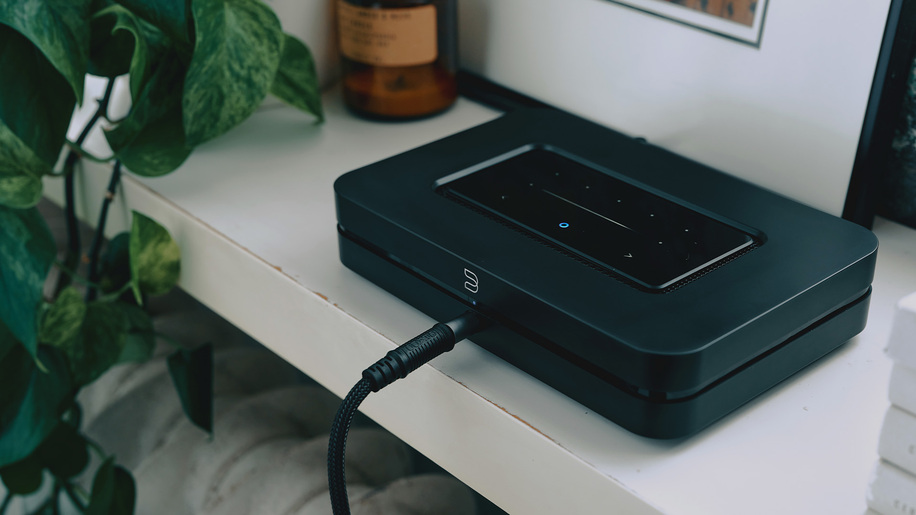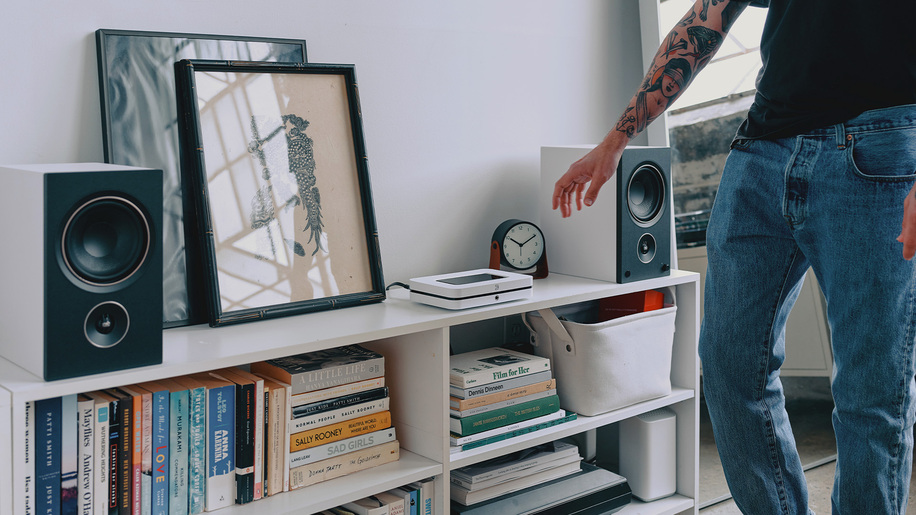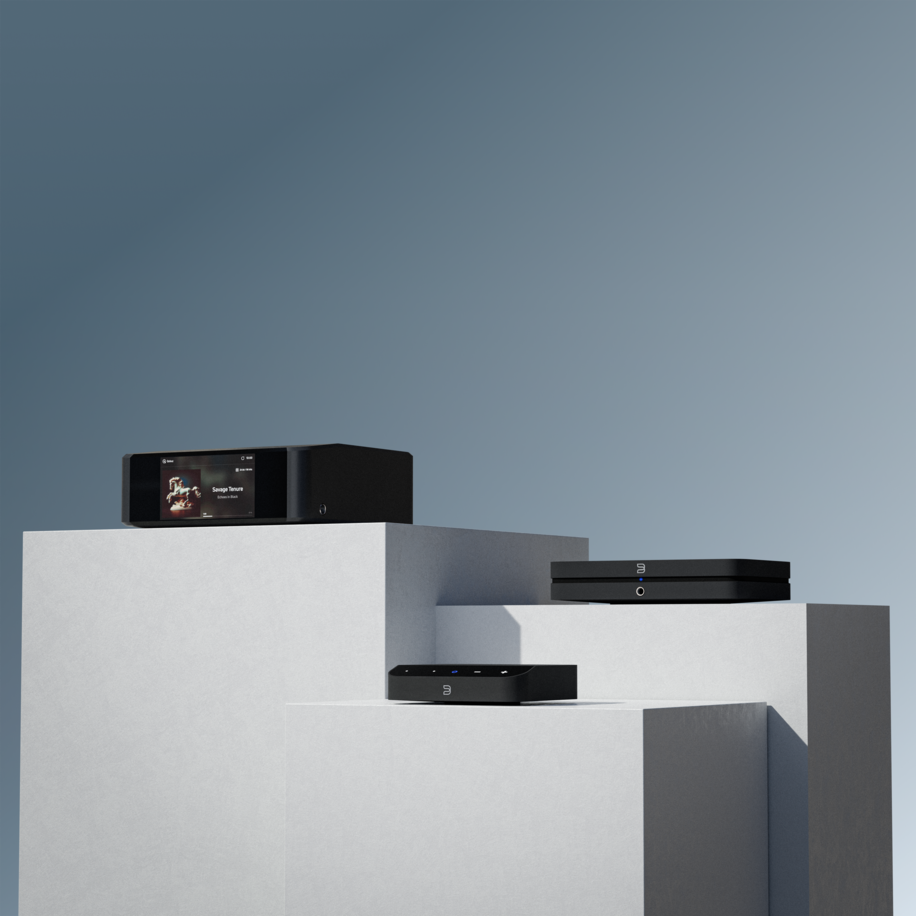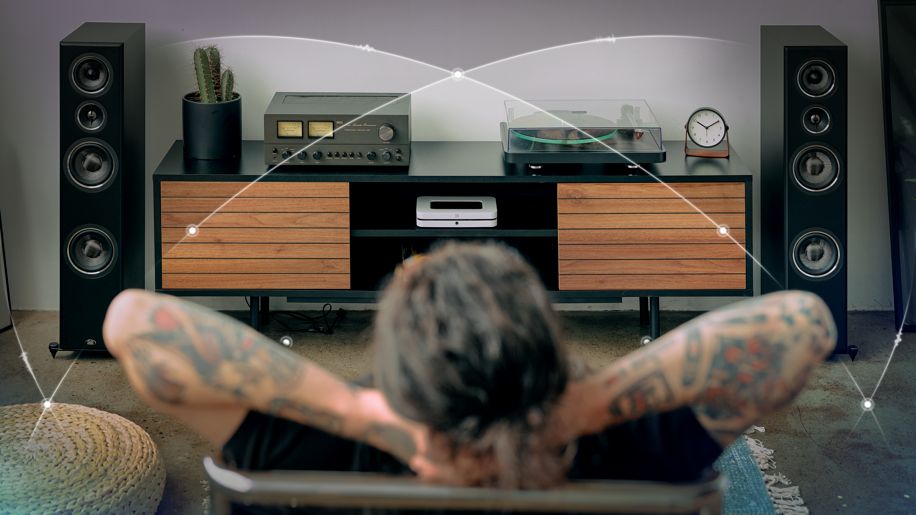The Bluesound Node Icon brings a 5in colour screen and audiophile chops to audiophile streaming, but is it right for the rack? Our trade focused reviewer Richard Stevenson finds out.
Check out all the other reviews on Essential Install.
Bluesound’s Node streamer has undergone several iterations and numerous software updates from its original Gen1 launch over a decade ago. It has since gained MQA, HDMI eARC, Dirac, the most comprehensive range of control system integrations on the market, and was one of the first streamers to offer true HRA. Its audio credentials have been designed and fine-tuned over the last 10 years by the same team responsible for NAD’s Masters Series components.
At under £500 retail, the Node remains a high-performance bargain streamer for installs, not least as they fit two-wide in the rack and stack without overheating thanks to vertical venting. I can vouch for this as I am running six of them. While the BluOS app and software developed a reputation for being a bit flaky back in the day, it’s now extremely solid, usable and reliable.
It would be easy to look at the new Node Icon as just a Node with a display, but it offers a whole lot more: Dual ESS Sabres DACs, balanced XLR analogue outputs, aptX Bluetooth and THX AAA headphone technology to name a few. It remains slim enough to run two-abreast in a rack, albeit growing to 2U height to accommodate the 5in full colour display. Top-mounted touch controls have been expanded to include a nicely responsive volume slider and five presets.
Integration with popular control systems covers plenty of bases including Crestron, C4, ELAN, RTI URC, Savant and Lutron and BluS API is an agile beast with plenty of flexibility in system design and customisation. Out of the box it is AirPlay2, Spotify Connect, Tidal Connect, Roon Ready, Alexa Skills enabled and capable of DSD playback.

Double-Bubble
It offers Dual-Band WiFi, Gigabit Ethernet and two-way Bluetooth 5.2 aptX to access the outside world and there are HDMI eARC, analogue, USB and Toslink for local sources. A built-in IR sensor with remote learning, a 12V trigger and both wired and wireless sub outputs are all top-notch additions for installers. Top that off with Dirac Live (with paid levels) room EQ and a headphone output driven by one of the best-in-class headphone stages, and if there is anything missing off the ‘must-have’ list, I can’t find it!
Build quality looks solid with an aluminium case but it doesn’t quite exude the bullet-proofness of the original rubber-clad Node. The paint finish will ensure the surface doesn’t go tacky over time (as it tended to on Node Gen1), and the cool-running electrics with a non-vented case top will ensure dust remains on the outside.
Setting up Bluesound is very simple, with the app automatically detecting a new player soon after it is plugged in. Transferring Wi-Fi credentials is straightforward, and the app’s audio menu gives you some minor tweaking over tone control, sub controls, replay gain and mono/L/R/stereo output. You can set a fixed output level, bypassing app and top slider volume control, if the Node is feeding a system with a master volume.
Ironically, as a Spotify Connect and Tidal Connect fan, the Bluesound app becomes almost redundant as the Icon works seamlessly with both, with relevant artwork popping up immediately.
Straight out of the box, the Icon establishes its audiophile credentials with a crisp and spacious balance, with fine detailing. Bass is tight and fast rather than gizzard-wobbling, but that serves to give the overall sound a sophisticated and nuanced presentation. Female vocal, choral, light classical and folk all work exceptionally well with true audiophile clarity. Motorhead, not so much.

Rocking Out
Rolling in our default Velodyne MiniVee X (now in ‘Q-Acoustics white’ thanks to a Redline makeover) and the Icon gets its rock boots on too. The tight LF works well with the MiniVee X, creating an articulate, super-punchy sound that would have the most hardened audiophile nodding appreciatively and foot tapping to Jay-Z.
Reaching for the Dirac license, Bluesound calibrated mic kit and the laptop, things get very interesting. Appreciating Dirac, or any Room-EQ systems, is room dependent; the full bandwidth EQ added richness and depth to an already impressive performance in our test setup. The selection of target curves further allows individual tuning of the overall balance, giving installers the option to offer a customer-preferred result before signing off on the system. Back-hauling the TV output through eARC HDMI worked equally well, turning any 2.0 or 2.1 speaker system hooked up to the Icon into a slimmed-down AV performer.
Over about a month of use, the Icon stayed up and visible in the app 100% of the time. Gen1 Nodes on the same network often have unscheduled holidays where they simply disappear from the app for a while, suggesting the later units’ connectivity is much more robust these days. Browser access to each player’s controls is straightforward, giving the installer remote control and configuration options should the customer get finger-happy with the user settings.
The Node Icon is a great step-up from a Node, prettier, more flexible, better featured and rocking that superb display. Given the core architecture, ESS DACs, stunning headphone stage and display, the Node Icon in use feels more like a stripped-down NAD Master’s M66 than a beefed-up Node. Its handy £900 RRP is less than twice the price of a Node and a small fraction of an M66, making it something of a first-class bargain.
The Icon is designed for both consumer Hi-Fi systems and AV installations alike, perhaps favouring the former with its impressive colour screen and on-board user controls. While I grant you those features are far from essential inside a kit-room, I can’t help thinking that two or four zones of Icon screen goodness would look damn fine with the rack door open.





